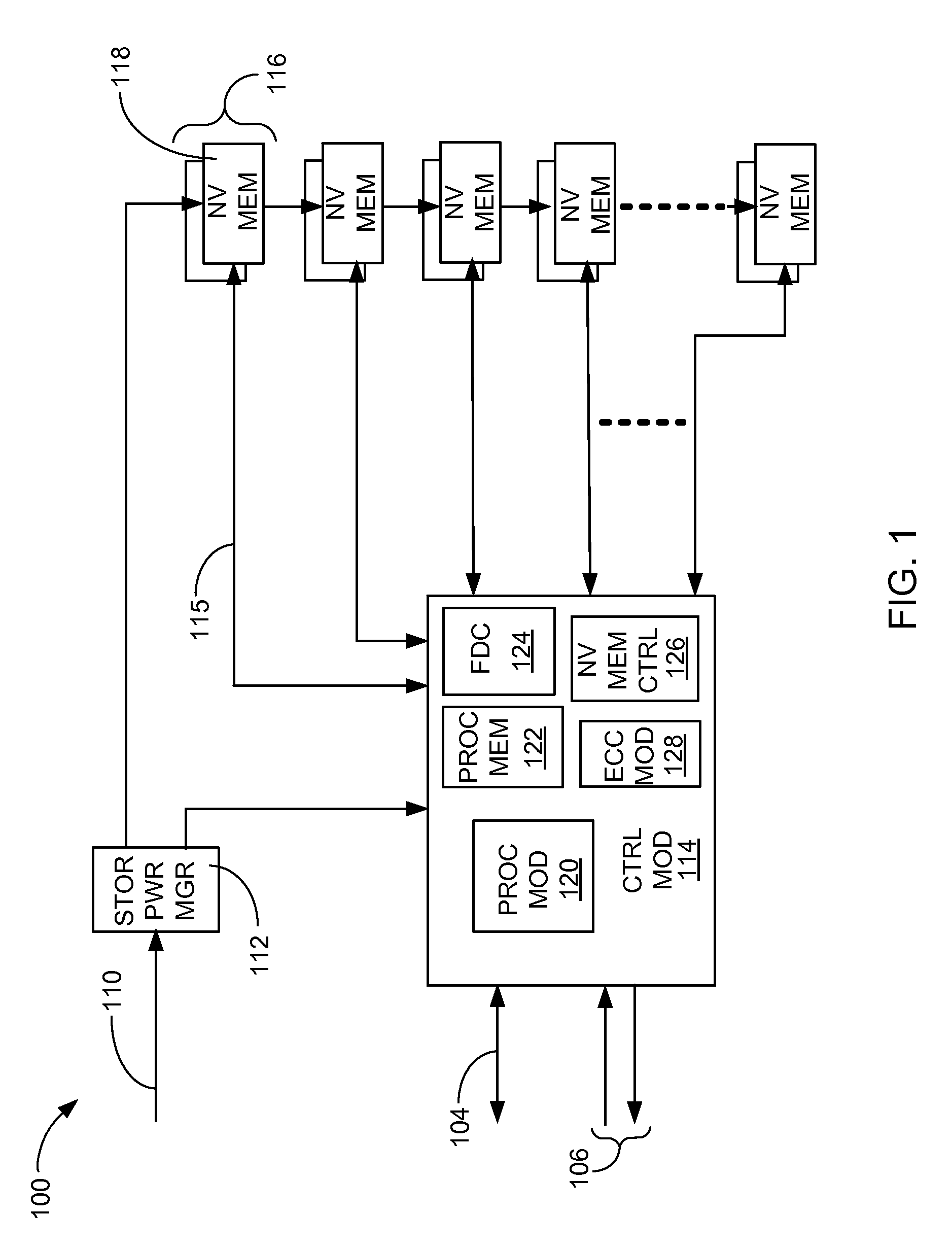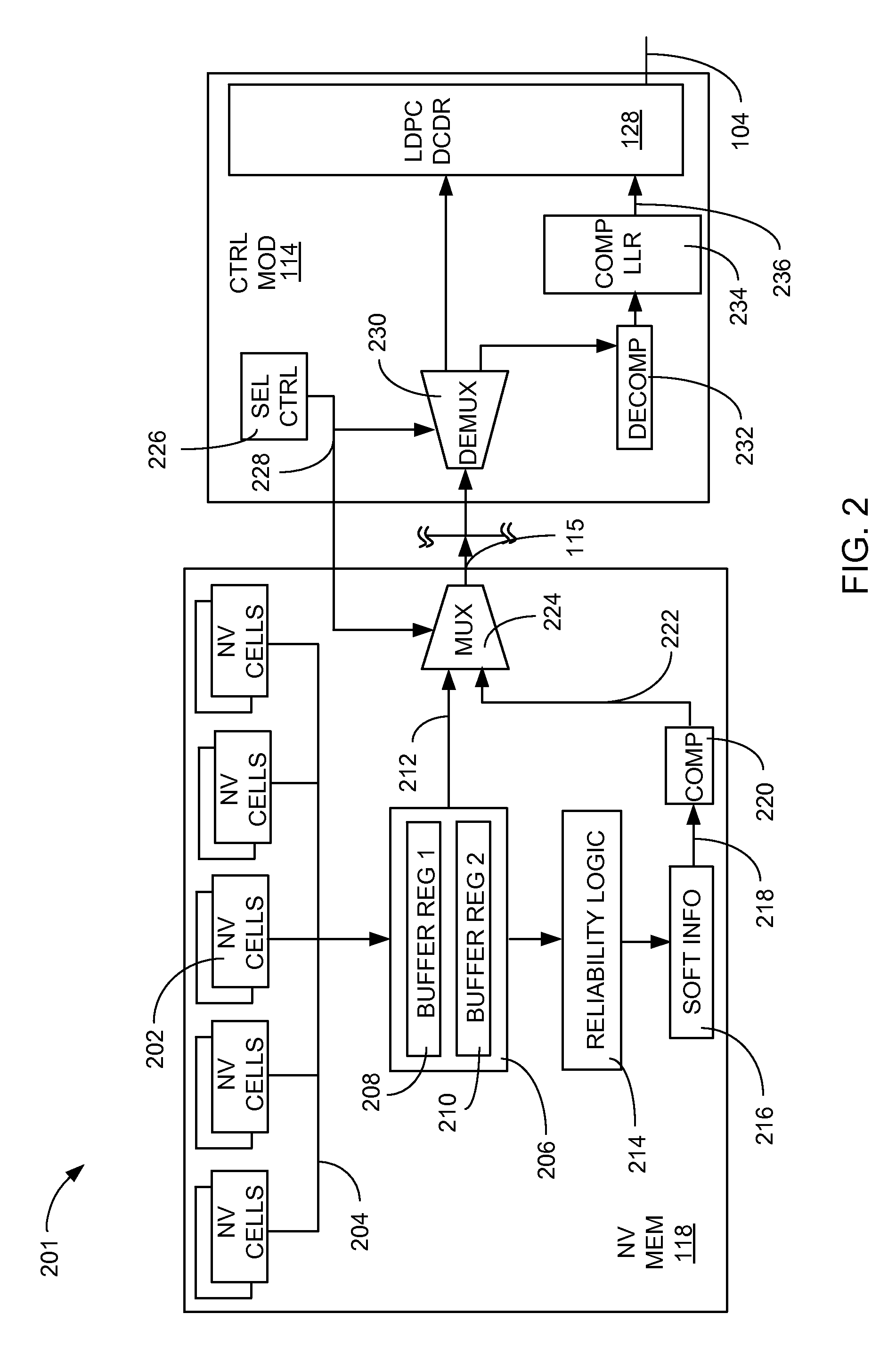Method and system for improving data integrity in non-volatile storage
a non-volatile storage and data integrity technology, applied in the field of non-volatile memory systems, can solve the problems of reducing the usable capacity, reducing the reliability of the information stored in the flash, and affecting the usability of the flash, so as to improve the data integrity, and improve the effect of data integrity
- Summary
- Abstract
- Description
- Claims
- Application Information
AI Technical Summary
Benefits of technology
Problems solved by technology
Method used
Image
Examples
second embodiment
[0052]Referring now to FIG. 4, therein is shown a control flow 401 for the non-volatile memory system 100 of FIG. 1. The control flow 401 depicts an error detected module 402 that indicates the hard data bits 212 of FIG. 2 were not decoded correctly by the error correction module 128 of FIG. 1. Modulus numbers M and N can be selected by the controller module 114 of FIG. 1 and configured into the lossy compression module 220 of FIG. 2. The value of M can be a span of bits that are referenced together by a single soft information value. The value of N can be a divisor of the code word that would determine the reduction in time and power for performing the iterative correction process. A start transfer bit K can be initialized to a zero value for the start of a correction process.
[0053]The value of M represents a span of the hard data bits 212 that are reflected in the soft information 218 provided by the lossy compression module 220. The value of M must be greater than or equal to 2. ...
third embodiment
[0063]Referring now to FIG. 5, therein is shown a control flow 501 for the non-volatile memory system 100 of FIG. 1. A variable rate code for sharing soft information between the non-volatile memory device 118 of FIG. 1 and the error correction module 128 of FIG. 1 can improve the efficiency of the LDPC iterative decode process. To be efficient, bit patterns that repeat frequently should be represented with short codes for the syndrome bits 222 of FIG. 2, and uncommon bit sequences can be represented with long codes for the syndrome bits 222 since they occur so infrequently.
[0064]
TABLE 3Sample code words with a probability of occurrence.N8Prob of Unreliable Bit0.01Prob of Reliable Bit0.99# UnreliableSyndromeSyn(Pr of occ) *bits / NProb of OccurbitsLengthLength09.23E−01019.23E−0117.46E−021021.49E−0122.64E−0311037.91E−0335.39E−05111042.16E−044 or more6.78E−071111053.39E−06Avg soft Bits / data bit0.135
[0065]In table 3, the “Prob of Occur” indicates the probability of occurrence of the numb...
PUM
 Login to View More
Login to View More Abstract
Description
Claims
Application Information
 Login to View More
Login to View More - R&D
- Intellectual Property
- Life Sciences
- Materials
- Tech Scout
- Unparalleled Data Quality
- Higher Quality Content
- 60% Fewer Hallucinations
Browse by: Latest US Patents, China's latest patents, Technical Efficacy Thesaurus, Application Domain, Technology Topic, Popular Technical Reports.
© 2025 PatSnap. All rights reserved.Legal|Privacy policy|Modern Slavery Act Transparency Statement|Sitemap|About US| Contact US: help@patsnap.com



